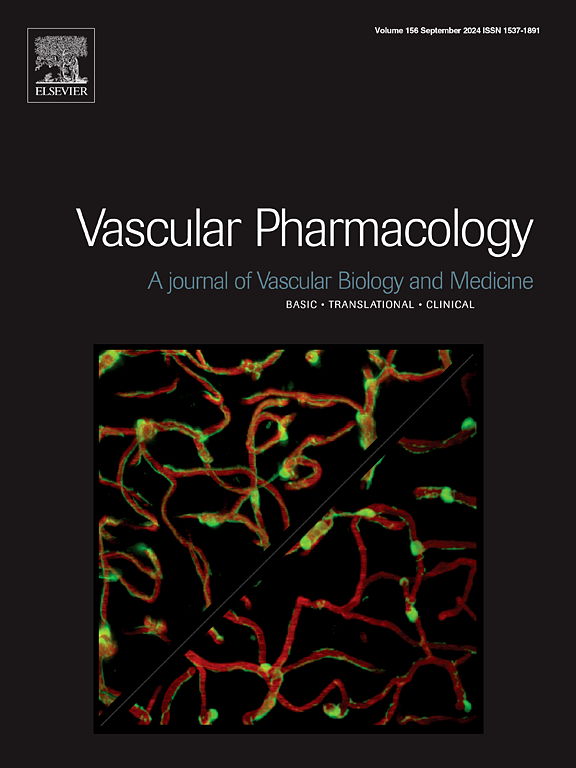Multi-omics identification of quantitative trait loci associated with vascular pathogenesis and diagnostic potential in chronic venous disease
IF 3.5
3区 医学
Q2 PHARMACOLOGY & PHARMACY
引用次数: 0
Abstract
Chronic venous disease (CVD) is a prevalent vascular disorder with a poorly characterized genetic basis. In this study, we employed an integrative omics strategy combining genome-wide association studies (GWAS), expression quantitative trait loci (eQTL) mapping, endothelial cell functional assays, and transcriptomic correlation analysis to elucidate the molecular architecture of CVD. A GWAS conducted in a Taiwanese population identified two CVD-associated single nucleotide polymorphisms: VSTM2L rs1998049 and DPYSL2 rs1442887. Through eQTL analysis and endothelial functional assays, four QTLs (VSTM2L, RPRD1B, SAMHD1, and PNMA2) were found to significantly affect VEGF consumption, vWF expression, and endothelial tube formation. Co-expression and correlation analyses further linked these QTLs to key vascular effector genes, including VEGF, vWF, MMP9, and CCM2. A logistic regression model based on QTL expression profiles demonstrated high diagnostic performance (area under the curve, AUC = 0.898), highlighting their translational potential. These findings offer novel insights into the functional genomics of CVD, particularly in relation to vascular remodeling, endothelial dysfunction, and inflammation. They also demonstrate the utility of multi-omics integration for biomarker discovery in complex vascular disorders.

与慢性静脉疾病血管发病和诊断潜力相关的数量性状位点的多组学鉴定
慢性静脉疾病(CVD)是一种普遍存在的血管疾病,遗传基础不明确。在这项研究中,我们采用了整合组学策略,结合全基因组关联研究(GWAS)、表达数量性状位点(eQTL)定位、内皮细胞功能测定和转录组相关分析来阐明CVD的分子结构。在台湾人群中进行的GWAS发现了两个cvd相关的单核苷酸多态性:VSTM2L rs1998049和DPYSL2 rs1442887。通过eQTL分析和内皮功能测定,发现4个qtl (VSTM2L、RPRD1B、SAMHD1和PNMA2)显著影响VEGF消耗、vWF表达和内皮管形成。共表达和相关分析进一步将这些qtl与关键的血管效应基因联系起来,包括VEGF、vWF、MMP9和CCM2。基于QTL表达谱的逻辑回归模型显示出较高的诊断性能(曲线下面积,AUC = 0.898),突出了它们的翻译潜力。这些发现为CVD的功能基因组学提供了新的见解,特别是与血管重塑、内皮功能障碍和炎症有关。他们还展示了多组学整合在复杂血管疾病中发现生物标志物的效用。
本文章由计算机程序翻译,如有差异,请以英文原文为准。
求助全文
约1分钟内获得全文
求助全文
来源期刊

Vascular pharmacology
医学-药学
CiteScore
6.60
自引率
2.50%
发文量
153
审稿时长
31 days
期刊介绍:
Vascular Pharmacology publishes papers, which contains results of all aspects of biology and pharmacology of the vascular system.
Papers are encouraged in basic, translational and clinical aspects of Vascular Biology and Pharmacology, utilizing approaches ranging from molecular biology to integrative physiology. All papers are in English.
The Journal publishes review articles which include vascular aspects of thrombosis, inflammation, cell signalling, atherosclerosis, and lipid metabolism.
 求助内容:
求助内容: 应助结果提醒方式:
应助结果提醒方式:


